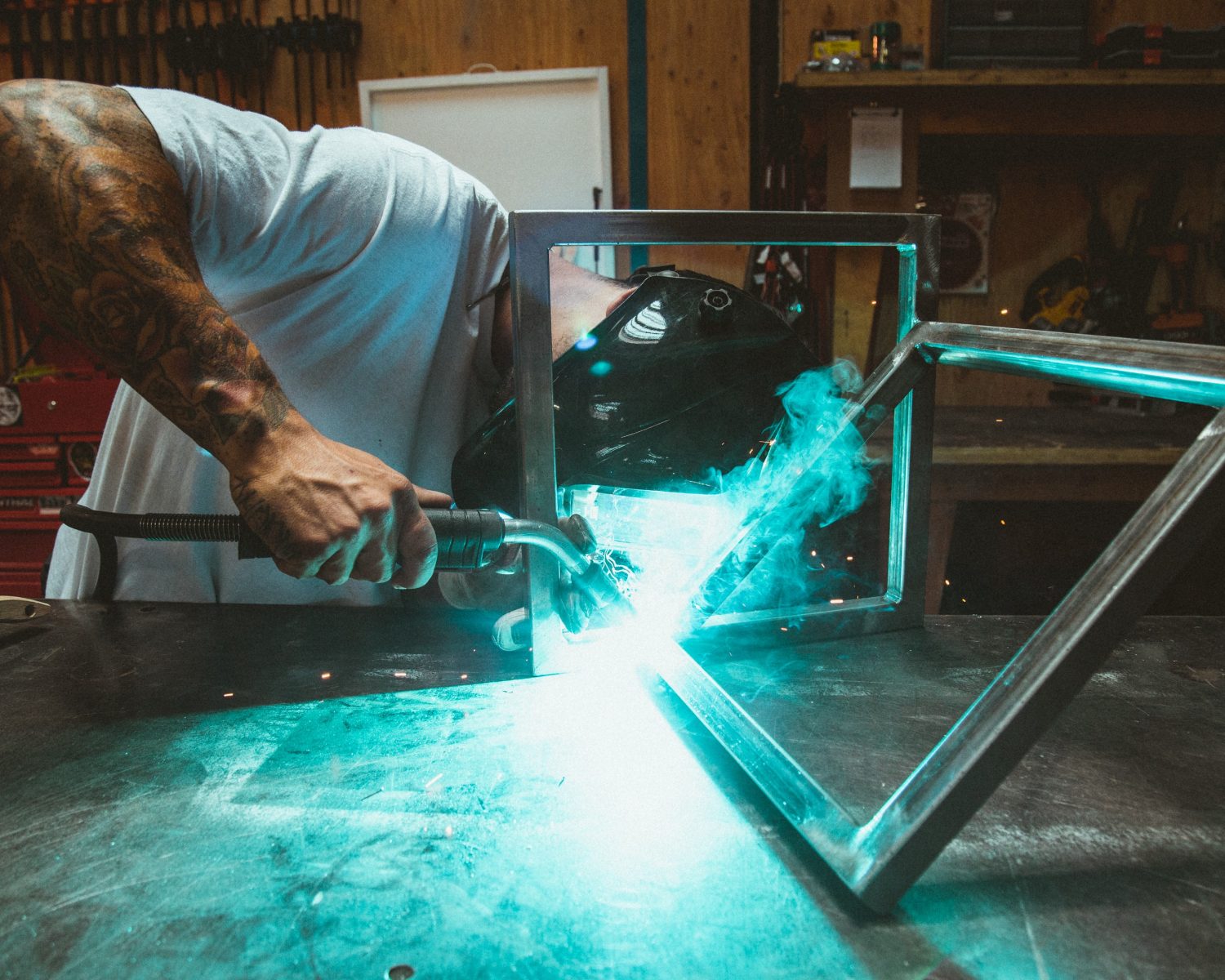What is TIG welding?
09th Aug

TIG welding (Tungsten inert gas welding) is a sub-type of gas metal arc welding (GMAW). It is a process that uses electricity to both melt and join pieces of metal. This welding method was first invented in the 1940s to tackle the difficulty of welding magnesium and aluminium within the Californian aerospace industry.
Since then, its popularity has taken off massively and not just in the aerospace industry. This is mostly due to its versatility, cleanliness, minimal finishing requirement, and how efficient it is to use when you want to weld a broad range of different metals. Despite equipment details evolving and adapting from its initial invention, the basic principles of TIG welding remain the same.
How does TIG welding work?
TIG welding uses electricity to generate an arc (short circuit) between a non-consumable tungsten electrode (positive anode) and the metal being welded (negative cathode). The arc is protected by a stream of inert gas, usually argon.
A non-consumable tungsten electrode
Compared to the consumable electrode wire in MIG welding, TIG welding tungsten electrodes have a much higher melting point (c. 6192 degrees Fahrenheit or 3422 degrees Celsius) which means they won’t melt during welding. Instead, the arc that runs between the electrode and the work melts the parent metal. At the same time (unless it is an autogenous weld, like a temporary tack weld), the arc also melts a separate welding rod of filler metal to create the weld bead.
Inert shielding gas
The molten weld pool is also covered by an inert shielding gas. Normally, this is argon on its own or an argon mixture, although more experienced TIG welders might opt for helium as it can make for faster welding under specific circumstances.
The shielding gas is pushed along a supply pipeline from the welding machine to the TIG torch that is holding the tungsten electrode. Like with other types of electric arc welding, when the heat is taken away, the weld pool cools down, solidifies, and creates a new piece of fused metal.
As a result of this, when you are using a TIG welder for your metal fabrication, you need to co-ordinate the interaction of a hand-held TIG torch with a filler rod on top of varying the electrical current. Ensuring the electrode is the right distance from the weld, holding the filler rod tip in place, keeping both in the shielding gas, and altering the current all contribute to the complexity of TIG welding.
The versatility of TIG welding
It is that same complexity that makes the TIG welding process extremely versatile for welding a wide variety of metals. Stainless steel, mild steel, aluminium, copper alloys, magnesium, gold, and titanium can all be welded using the TIG approach. Even metals that are dissimilar can be TIG welded, and all with hardly any mess to clean up at the end.
Ever since its creation at California’s Northrop Aircraft Corporation, TIG welding has been the top choice amongst welders because of its versatility. In addition to its ability to handle more difficult welds like ‘S’ shapes, corners, and curves.
What are the benefits of TIG welding?
- TIG welding can be used for various metal thicknesses. It is even suitable for particularly thin materials that are challenging (or impossible) to join with other welding techniques.
- Good arc and weld pool control will help you get clean, attractive welds when appearances are important. Due to heat input (decided by the electrical current) normally being controlled with a foot pedal, TIG welding enables you to heat or cool the weld pool for precise control of the weld bead. This makes TIG welding perfect for cosmetic welds on sculptures, automotive work, or architectural features.
- TIG welding can be done in any position whether it is vertical, horizontal, or overhead.
- It’s easy to see your whilst welding as there is minimal smoke and the shielding gas is colourless.
- TIG welding only needs minimal cleaning and finishing which will save you time, effort, and money. This is because it creates less spatter, sparks, smoke, and fumes than other welding processes.
- TIG welds are much stronger and more resistant to corrosion than other welds.
- The best TIG welding machines allow you to do traditional stick welding too.
Are there any disadvantages to TIG welding?
- TIG welding can be quite slow, especially at the beginning. Even when it is carried out by skilled welders the process is typically slower than other welding methods.
- Because of how complex it is, TIG welding comes with a steeper learning curve than other types of welding. The rewards you will get when you master it are worth it, but if you’re learning to do it yourself you need time and patience to effectively develop your skills.
- TIG welding can be quite dangerous outside the controlled environment of a workshop. This is due to the importance of being able to keep a consistent flow of gas over the weld pool.
As you can see, the benefits of TIG welding far outweigh the drawbacks.
Contact us
If you need help with metal fabrication you should contact an experienced fabrication engineer like our team at FEM. Get in touch to discuss your requirements.